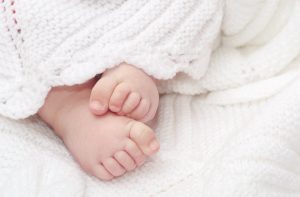Pediatric Injuries and Fractures
Injuries, and especially bone fractures, require specialized diagnosis and care when they occur in children. Kids’ bones are still developing and not yet fully mature. Compared to adults, kid have softer skeletons with more elasticity, as well as exposed sections of bones known as “growth plates” that are more vulnerable to damage. As a result, kids often experience very different types of injuries and fractures, and treating them is fundamentally different.

Growth Plate Fractures
What Are They?
Also known as Salter-Harris fractures, growth plate fractures are extremely common in growing children, especially active adolescents. Most often they are caused by a single traumatic injury during a competitive sporting event or a recreational outdoor activity. Occasionally, however, they can be caused by repetitive overuse.
In addition to swelling, tenderness, and sometimes severe pain, Salter-Harris fractures often produce a visible deformity, such as a limb or foot that looks crooked. They are classified according to one of five categories:
- Type I fractures break clean through the bone between the growth plate and the bone shaft.
- Type II fractures break partially through the growth plate and part of the bone shaft.
- Type III fractures break a piece of the bone end from the growth plate.
- Type IV fractures break lengthwise through part of the bone shaft, growth plate, and bone end.
- Type V fractures feature crush damage to the growth plate due to a high compression force.
Why They Need Prompt Treatment
Growth plates, true to their name, are responsible for growing new bone tissue and determining the final length and shape of the mature bone. If a growth plate injury is not fixed promptly, it could mean that the injured bone will remain permanently crooked or shorter than the bone on the opposite limb.
Fortunately, with proper care delivered in a timely fashion, the vast majority of Salter-Harris fractures will heal fully with no long-term complications.
Fixing Growth Plate Fractures
Many Salter-Harris fractures can be treated without surgery, if the fragments of bone are not too far out of place. A protective cast will be necessary to hold the bone in place while it heals.
More unstable fractures will require surgery. Procedures can vary depending on both the nature and severity of the injury. The most common approach is a procedure called open reduction and internal fixation. In the reduction phase, the bone’s fragments are carefully repositioned. Then, in the fixation phase, hardware (such as screws or wires) is used to hold the bones in proper alignment.
Short and Long-Term Outlook
Fortunately, kids are resilient, and their bones tend to heal quickly (at least when compared to adults). The complete recovery may take a few weeks to a couple of months, depending on the severity of the fracture. We will also provide you with a list of exercises and a timeline for activities to aid the rehabilitation process.
Although long-term complications are rare, we still recommend periodic follow-up appointments for at least a year, just to be sure that bones are continuing to grow correctly and appropriately.
Other Pediatric Injuries
Bones and growth plates can be injured without being fractured. Other common lower limb pediatric injuries include:
- Sever’s disease, also known as calcaneal apophysitis. Here, the growth plate in the heel bone becomes inflamed due to repetitive impacts, causing heel pain.
- Knee injuries. Pain is located in or around the kneecap due to injury to either the patellar tendon or the growth plate of the kneecap. Kids who play jumping sports, like basketball or volleyball, are particularly at risk. Diagnosed injuries include Osgood-Schlatters, Sinding-Larsen-Johansson syndrome, and jumper’s knee.
- Stress fractures. Kids who rapidly increase their activity levels or start a new sport may develop thin, hairline cracks in bones due to the stress. They are most common in the long bones of the midfoot.
Of course, kids are also susceptible to a wide range of injuries that can occur at any age, including ankle sprains, muscle strains, tendon tears, and more.
The family and children’s foot doctors at Southern California Foot & Ankle Specialists, Dr. Robert Spencer and Dr. Nitza Rodriguez, are passionate about helping your little ones overcome their injuries and return to full activity. To schedule a consultation for any pediatric foot injury or fracture, please call us today at (949) 364-9255.
Contact Us
Ladera Ranch
333 Corporate Dr. Ste 230, Ladera Ranch, CA 92694
Tel: (949) 364-9255 (WALK)
Fax: (949) 364-9250
Office Hours:
Monday - Friday: 9am - 5pm
*(Lunch 12 noon - 1pm)
Orange
2617 E Chapman Ave. Ste 303, Orange, CA 92869
Tel: (714) 639-7993
Fax: (714) 639-0729
Office Hours:
Monday - Friday: 9am - 5pm
*(Lunch 12 noon - 1pm)
